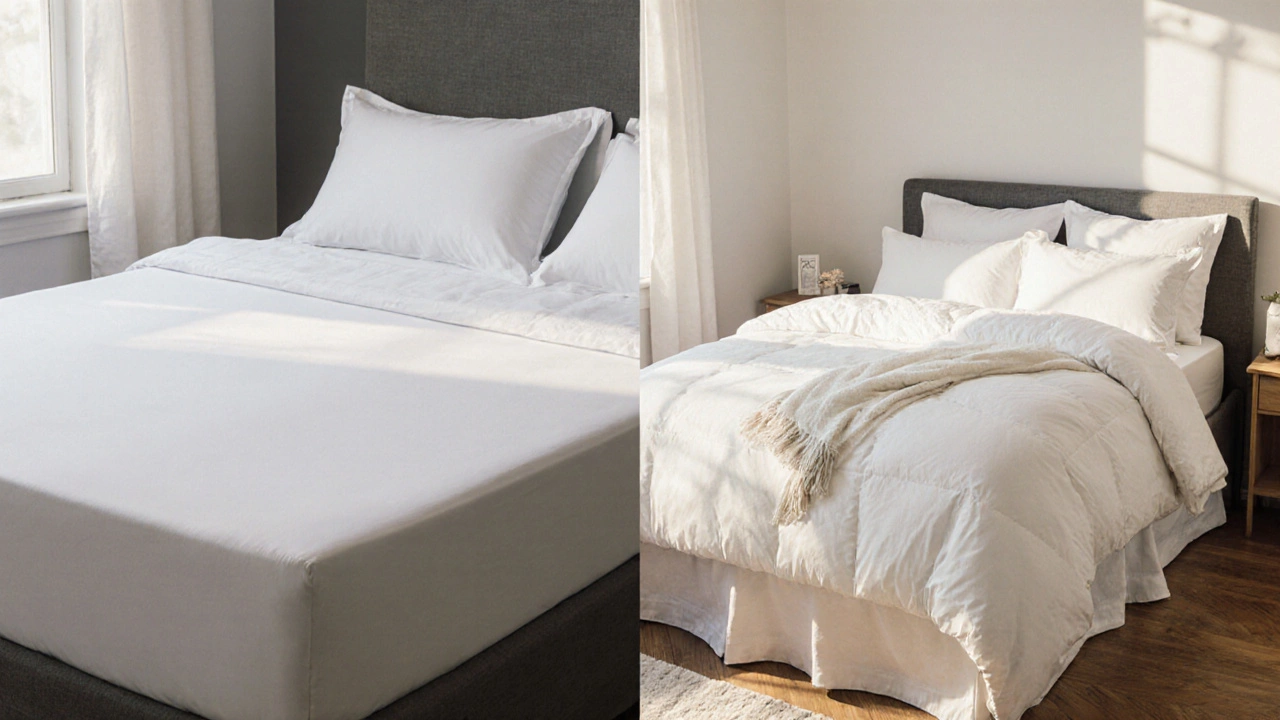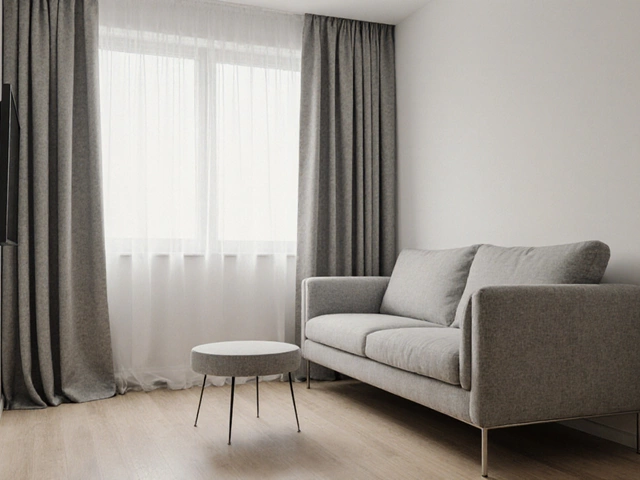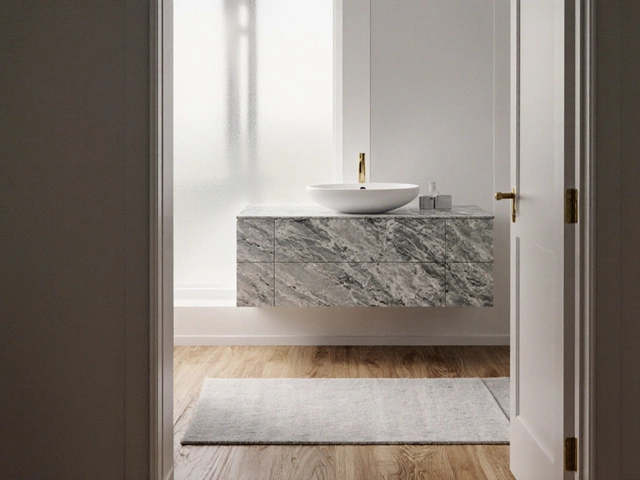Bed Sheet Size Calculator
Choose your mattress size and depth to find the perfect sheet fit. Modern mattresses can be 12-20 cm deep, so pocket depth matters for a snug fit.
When you hear the term bed sheets are the flat and fitted fabrics that cover a mattress, you might think it’s the same as bedding the whole collection of items that dress a bed, from sheets to blankets. In reality, they serve different roles, and knowing the difference between bed sheets and bedding can help you buy smarter, style better, and keep your sleep space comfortable.
What Exactly Are Bed Sheets?
Bed sheets are the two pieces you actually lay on top of the mattress. A typical sheet set includes:
- Fitted sheet has elastic corners that hug the mattress, keeping the sheet snug
- Flat sheet lies over the fitted sheet and can be tucked under the mattress for a neat finish
Sheets come in a range of materials-cotton, linen, polyester, flannel-and thread counts, which affect softness and durability. A high thread count (e.g., 400‑600) usually feels smoother, while a lower count (200‑300) can be more breathable, especially in hot climates.
What Does Bedding Actually Include?
Bedding is the umbrella term that covers everything you place on a bed, including but not limited to sheets. A full bedding set typically contains:
- Bed sheets (fitted + flat)
- Pillowcases cover the pillow and protect it from sweat and oils
- Duvet or comforter provides the main layer of warmth
- Blanket or throw adds extra warmth or style
- Mattress cover protects the mattress from spills, dust mites, and wear
Some people also include decorative shams, a bed skirt, or a weighted blanket under the bedding umbrella.
Core Components Compared
| Aspect | Bed Sheets | Bedding (overall) |
|---|---|---|
| Primary function | Cover the mattress directly | Complete sleep environment |
| Typical pieces | Fitted + flat sheet | Sheets, pillowcases, duvet, blanket, mattress cover, etc. |
| Material focus | Softness, breathability, thread count | Warmth, insulation, protection, style |
| Maintenance | Usually washed weekly | Varies - duvet may be dry‑cleaned, mattress cover washable |
| Cost impact | Relatively low per set | Higher when adding comforter, mattress protector, etc. |
The table illustrates why many shoppers lump everything together: sheets are just one piece of the bedding puzzle.
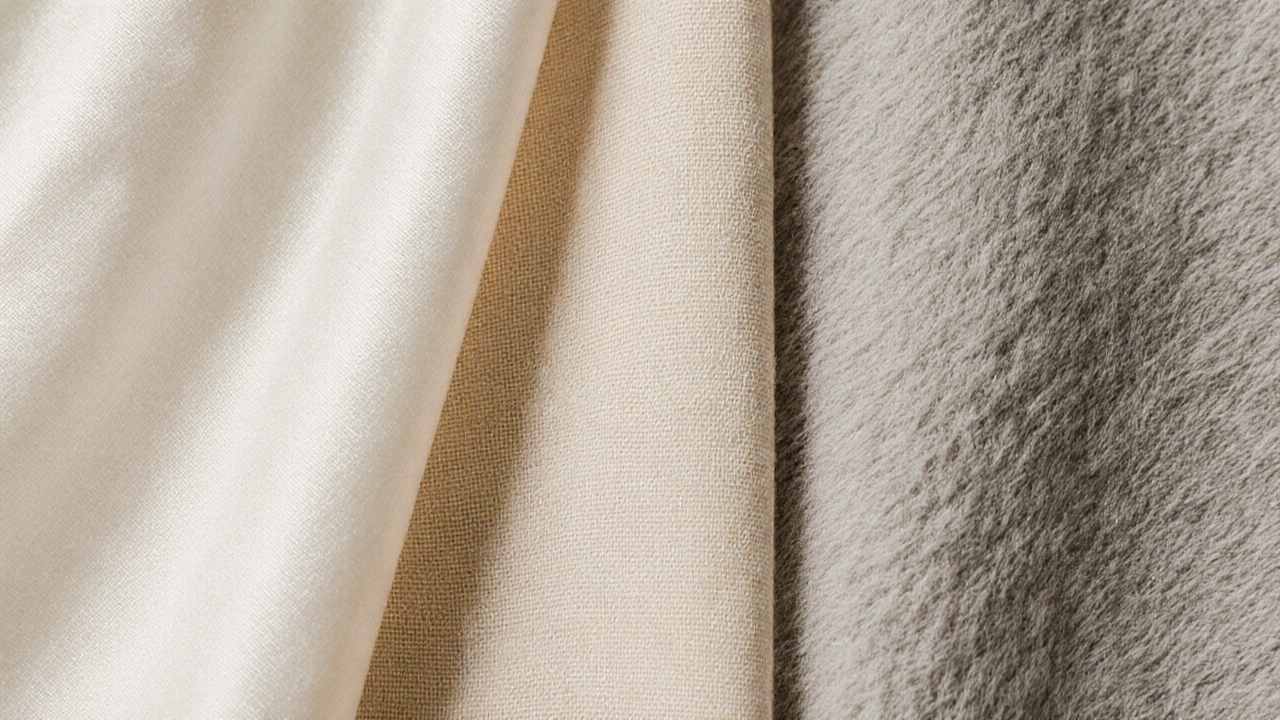
Materials Matter: From Cotton to Flannel
Choosing the right fabric for each component can make a huge difference in comfort and lifespan.
- Cotton natural fiber known for breathability and softness; Egyptian and Pima varieties are premium
- Linen offers excellent airflow, gets softer with each wash, but wrinkles easily
- Polyester blends are durable, resist shrinking, and tend to be more affordable
- Flannel brushed cotton or wool surface, ideal for cold climates
For bedding layers like duvets or blankets, you’ll also see down, synthetic fill, or wool, each with its own warmth‑to‑weight ratio.
How to Choose the Right Set for Your Bed
Follow these steps to avoid confusion and get a set that fits both your bedroom size and your lifestyle.
- Measure your mattress depth. Modern mattresses can be 12‑20 cm deep, so pick a fitted sheet with enough pocket depth.
- Decide on a material based on climate. Cotton for year‑round, linen for hot summers, flannel for winters.
- Count the pieces you need. A guest room might only require sheets and pillowcases, while a master suite could include duvet, blanket, and a mattress protector.
- Check care instructions. If you dislike dry cleaning, avoid silk duvet covers.
- Set a budget. Sheets cost $30‑$100 per set; a full bedding package can range $150‑$800 depending on quality.
When you line up your needs, you’ll see why the difference is not just semantics-it’s about functionality.
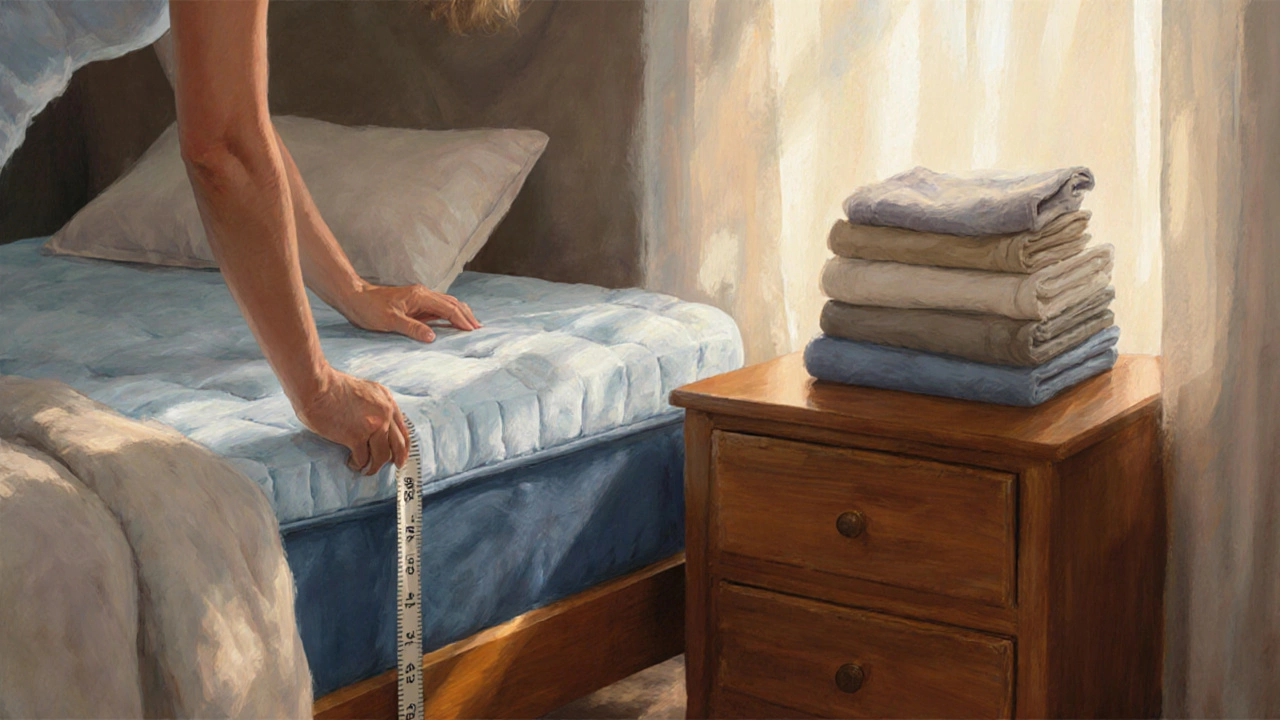
Common Mistakes and How to Avoid Them
- Buying the wrong size. Always verify twin, full, queen, king, or California king dimensions before ordering.
- Ignoring mattress protectors. A cheap mattress cover can extend the life of both the mattress and your sheets.
- Mixing materials unintentionally. Pairing a heavy flannel blanket with a light cotton sheet set can feel unbalanced.
- Over‑washing. Frequent hot washes shrink cotton sheets; use a gentle cycle and cool water.
Fixing these errors saves money and keeps your bed looking fresh.
Quick Checklist: Bed Sheet vs Bedding Decision Guide
- ✅ Do you need just the two layers that touch the mattress? → Choose bed sheets only.
- ✅ Do you want pillow protection, warmth, and a polished look? → Go for a full bedding set.
- ✅ Have you measured your mattress depth? → Match fitted sheet pocket depth.
- ✅ What climate are you in? → Pick cotton/linen for heat, flannel/down for cold.
- ✅ How much maintenance are you comfortable with? → Choose easy‑care polyester blends or stick with natural fibers if you enjoy laundering.
Keep this list handy next time you browse a home‑goods store or click “add to cart”.
Are bed sheets considered part of bedding?
Yes. Bed sheets are a core component of bedding, but bedding also includes pillowcases, duvets, blankets, and mattress protectors.
Do I need a mattress cover if I have fitted sheets?
A mattress cover adds protection against spills, dust mites, and wear. It’s not mandatory, but it can extend mattress life and keep sheets cleaner.
What thread count is best for everyday use?
A thread count between 300‑400 offers a good balance of softness and durability for most households.
Can I mix materials, like cotton sheets with a polyester duvet?
Mixing is fine as long as the textures complement each other. Many people pair breathable cotton sheets with a warm synthetic duvet for year‑round comfort.
How often should I wash my bedding?
Sheets and pillowcases are best washed weekly. Duvet covers can be cleaned every 2‑4 weeks, and blankets or weighted blankets every month or as needed.

